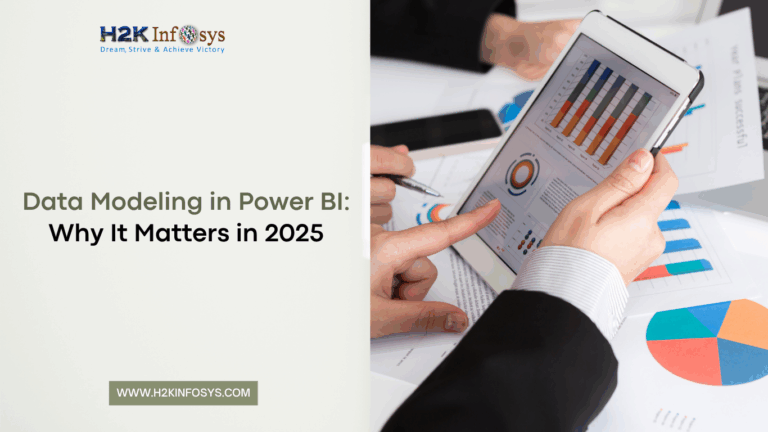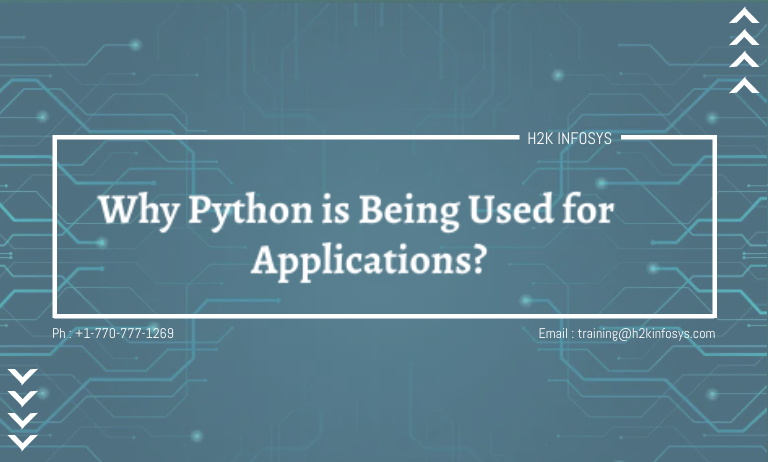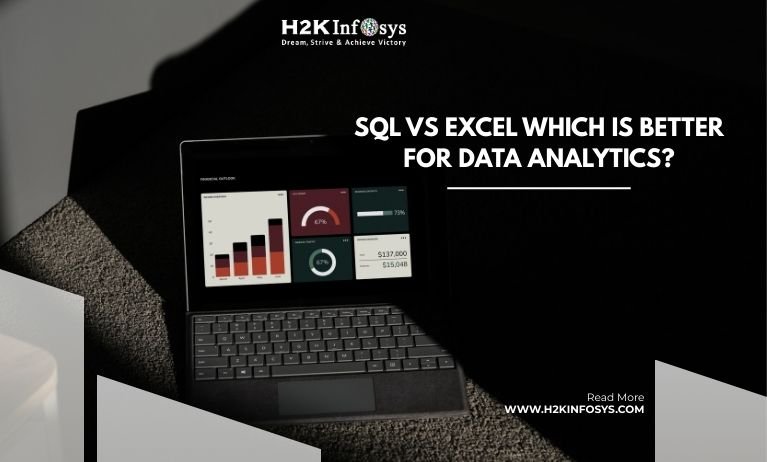Introduction
Imagine trying to build a house without a blueprint. You might have bricks, cement, and tools. But without a clear design, you can’t create a stable structure.
Data Modeling in Power BI is that essential blueprint for your analytics. It transforms disconnected data into organized, meaningful information that drives business decisions.
In 2025, with organizations handling five times more data than they did in 2020, the need for strong data models has never been higher. Whether you’re an analyst, manager, or developer, understanding how to model data correctly is the skill that sets you apart.
In this guide, you’ll discover:
- Why Data Modeling in Power BI is critical in 2025
- The key benefits of strong data models
- How to build a model step by step
- Real-world examples and visuals
- Resources to help you get certified
What Is Data Modeling in Power BI?
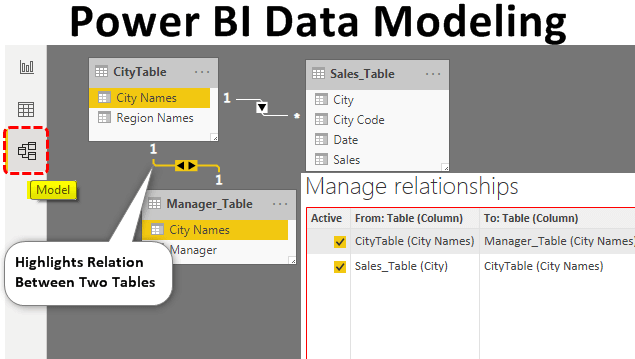
Data Modeling in Power BI is the process of designing the way tables connect and interact. A data model defines relationships, hierarchies, calculations, and structures that allow Power BI reports to be accurate, dynamic, and interactive.
Put simply: Data Modeling = Turning raw data into a format your reports can use effectively.
Key Elements of Data Modeling
- Tables: Data sources imported into Power BI (Excel, SQL Server, cloud databases).
- Relationships: Connections between tables (one-to-many, many-to-many).
- Calculated Columns and Measures: Custom calculations for reporting.
- Hierarchies: Structured levels for drill-down analysis (e.g., Year > Quarter > Month).
- Metadata: Table and field names, formatting, descriptions.
When you create a data model, you prepare your data so Power BI visuals can display insights without errors.
Why Data Modeling in Power BI Matters in 2025
Let’s look at why this topic is so important right now.
Data Volume Explosion
- In 2025, IDC predicts that 175 zettabytes of data will be generated globally.
- Organizations face data spread across cloud apps, on-premises servers, and IoT devices.
- Power BI training teaches you to consolidate this information into one coherent model.
Example:
A retail chain with stores worldwide needs to combine point-of-sale data, customer feedback, and inventory. Without a clear data model, reporting takes days and is prone to error.
Faster Decision-Making
According to Gartner, by 2025, 70% of organizations will rely on real-time data to drive decisions.
Data Modeling in Power BI supports this by:
- Optimizing performance (no slow queries).
- Simplifying complex calculations.
- Allowing real-time dashboards to refresh instantly.
Compliance and Data Governance
Data privacy rules like GDPR and CCPA require precise control over data access. A well-structured data model:
- Limits access to sensitive fields.
- Tracks data lineage.
- Provides clarity on where data originates.
Self-Service Analytics
Microsoft research shows that 62% of companies now encourage self-service BI. Non-technical users expect to slice, filter, and visualize data easily.
If your data model is clean:
- Users can drag and drop fields without breaking reports.
- Calculations remain accurate.
- Business teams become independent.
Benefits of Strong Data Modeling in Power BI
Here are the practical benefits you get with good modeling:
Improved Report Accuracy:
Relationships prevent duplicate records and aggregation errors.
Better Performance:
Models designed with star schemas run faster.
Simpler Maintenance:
Changes to calculations are centralized.
User-Friendly Reports:
End users get clear fields and intuitive hierarchies.
Scalability:
Models handle large datasets without slowing down.
Governance:
Data remains compliant and secure.
Star Schema vs. Snowflake Schema in Power BI
Two common approaches to modeling are:
Star Schema
- Fact Table: Core transactional data (sales, orders).
- Dimension Tables: Descriptive attributes (customers, products).
- Simpler relationships, better performance.
Example:
diffSales Fact Table:
- OrderID
- CustomerID
- ProductID
- Quantity
- SalesAmount
Dimension Tables:
- Customers
- Products
Why use Star Schema?
- Easier to understand.
- Preferred by Power BI’s VertiPaq engine.
- Faster aggregation.
Snowflake Schema
- Dimension tables are normalized (split into sub-tables).
- More complex relationships.
Example:
Customer dimension split into:
- Customers
- Customer Regions
Why use Snowflake Schema?
- Reduces redundancy.
- Useful for very large or complex datasets.
However, in 2025, most Power BI experts recommend star schemas due to simplicity and performance gains.
Step-by-Step Guide: Building a Data Model in Power BI
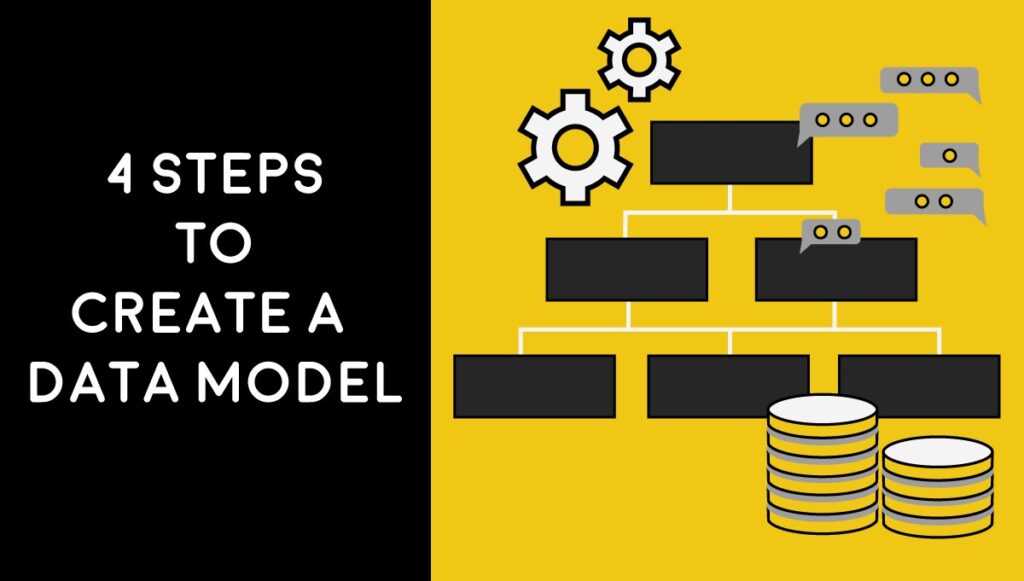
Let’s walk through how you build a model from scratch.
Step 1: Import Your Data
Use Power Query to:
- Connect to your sources.
- Clean the data (remove duplicates, transform formats).
- Load tables into Power BI.
Step 2: Create Relationships
In the Model View:
- Drag fields to create connections.
- Define cardinality (one-to-many, many-to-one).
- Set cross-filtering behavior.
Tip:
Always check relationship arrows to ensure data flows correctly.
Step 3: Build Calculated Columns and Measures
Calculated Column Example:
DAX
TotalPrice = Sales[Quantity] * Sales[UnitPrice]
Measure Example:
DAX
TotalSales = SUM(Sales[TotalPrice])
Measures aggregate dynamically in visuals.
Step 4: Create Hierarchies
Hierarchies enable drill-down.
Example:
- Year
- Quarter
- Month
Step 5: Optimize Your Model
- Remove unused columns.
- Hide technical fields.
- Set data types (Date, Currency).
- Enable aggregations.
Step 6: Validate and Test
Test your visuals:
- Slicers filter correctly.
- Totals are accurate.
- Performance is fast.
Best Practices for Data Modeling in Power BI
- Use Star Schemas: Simplifies relationships.
- Avoid Bidirectional Filtering: Use only if necessary.
- Name Tables Clearly: Use readable names.
- Hide Unnecessary Fields: Clean up the model.
- Use Measures Over Calculated Columns: Better performance.
- Document Your Model: Add descriptions for fields.
- Check Relationships Regularly: Avoid ambiguous paths.
Real-World Case Study: Retail Company Data Modeling Success
Company: Global Fashion Retailer
Challenge: Reports took 3 days to prepare. Data was spread across 10 systems.
Solution:
- Built a star schema model in Power BI.
- Consolidated sales, inventory, and CRM data.
- Created measures for gross margin, sales trends.
Results:
- Reporting time reduced from 3 days to 3 hours.
- 200+ users accessed reports with no technical help.
- 15% increase in sales through faster insights.
Common Mistakes in Data Modeling
✅ Ignoring Relationships: Leads to incorrect totals.
✅ Too Many Calculated Columns: Slows performance.
✅ Not Cleaning Data: Garbage in = garbage out.
✅ Overcomplicating Models: Keep it simple.
Tip:
Focus on clarity. Always ask: Will my users understand this model?
The Future of Data Modeling in Power BI

In 2025 and beyond, expect:
- AI-Assisted Modeling: Copilot in Power BI suggests relationships and calculations.
- Real-Time Models: Integration with streaming data.
- Increased Compliance Features: Automated data lineage.
- Semantic Models: Share across multiple reports and teams.
Power BI’s modeling capabilities are evolving rapidly, and staying current is critical.
How to Learn Data Modeling: Training and Certification
If you want to build expertise, consider:
Power BI Training
At H2K Infosys, you’ll get:
- Expert-led courses.
- Hands-on projects.
- Step-by-step exercises.
Modules Cover:
- Star and snowflake schemas.
- DAX formulas.
- Data governance.
- Performance tuning.
Power BI Certification
Certification demonstrates your skills to employers.
Microsoft Certified: Data Analyst Associate validates your knowledge in:
- Data preparation.
- Modeling.
- Visualization.
Benefits:
- Higher salaries.
- More job opportunities.
- Recognition in the field.
Key Takeaways
- Data Modeling in Power BI is the blueprint for meaningful reports.
- Star schemas remain the preferred structure.
- Clean models drive faster, more accurate insights.
- Mastering modeling boosts your career potential in 2025.
- Ongoing training and certification keep your skills up to date.
Conclusion
Building great reports starts with great data models. Whether you’re new to Power BI or an experienced professional, strong modeling skills are essential.
Ready to take your skills to the next level?
Enroll in H2K Infosys’ Power BI Certification programs to master Data Modeling and accelerate your career!
